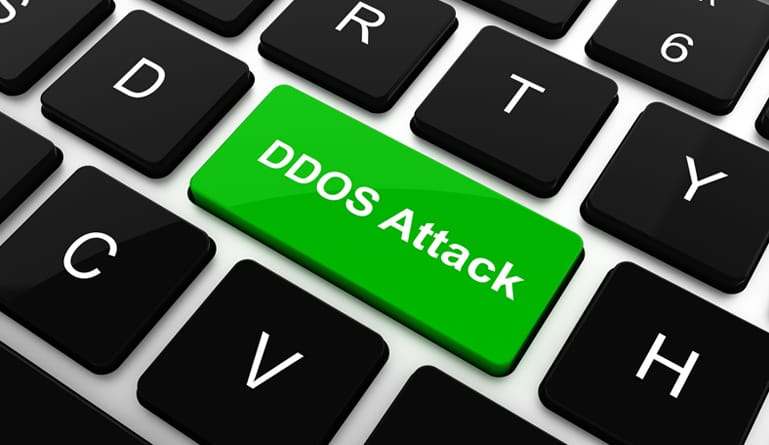A DDoS attack can be a threat to the digital presence of your company and your bottom line.
DDoS attacks can target any organization, but proper protect protocol can stop it in its tracks.
DDoS stands for “Distributed Denial of Service.” It can affect just about any publisher of content on the web, from financial institutions to news and media sites. A DDoS attack prevents users from accessing websites and any related site information by forcing an influx of traffic to the website, causing the website to become overloaded. Web servers are only capable of handling so much web traffic at a time based on their speed, memory, and several other factors, so an attacker can create malicious software to overwhelm the server and prevent access, since the server won’t be able handle additional requests. These attacks can be facilitated by various kinds of technology, and can focus on just about anything related to the delivery of information, not just servers. Attacks have overwhelmed specific devices, networks, applications, and even printers.
An organization’s website can be taken offline by such tactics, resulting in reduced sales or information outages that inconvenience potential and current customers. For these reasons, it is important to prevent DDoS attacks from ever occurring. Here are some tips on how to handle this particular cybersecurity threat.
Be Ready to Respond
One of the most important aspects related to stopping a DDoS attack is to have a strategy in place if an attack were to happen. Experts recommend regular tests of disaster responses so your company is never caught off guard. If your website comes down because of a DDoS attack, one of the first things to have in place is an internal communication strategy for alerting employees about the outage, as well as a messaging system such as emails or social media announcements that share news of the outage with customers. Being prepared to communicate and act means that more resources are freed up to handle the attack at hand.
Don’t Rely on Traditional Tactics
Believing that traditional cybersecurity methods will protect your organization from DDoS attacks leaves you vulnerable. Technology such as firewalls are not a fail-safe against DDoS threats. While firewalls and other security measures do help to block excessive traffic that is deemed illegitimate by internal monitoring, one of the best ways to prevent DDoS attacks is to have other anti-DDoS measures in place.
Some security experts recommend using a third-party vendor that specializes in DDoS protection. It is not always possible for internal resources and on-site software to handle the redistribution of traffic that an attack warrants, and investing in a third-party solution can help a company to stop DDoS attacks faster and more effectively.
Use What You Learn
If your business site suffers a DDoS attack, it is important to gather whatever data you can about your attackers, learn about your system responses, and evaluate the effectiveness of your security methods. This will help prevent DDoS attacks in the future, and help you understand how to block DDoS attacks. As sites and the security that protects them grow more sophisticated, so do the threats against them. It’s important to constantly evaluate the security of your website and make changes when necessary.
When it comes to stopping a DDoS attack, some of the best steps are preventative, including having an action and communication plan in place, and using software or a vendor system that can specifically help mitigate the effects of these kinds of attacks. Make sure you evaluate your resources and security protocols, so that your business is action-ready in the event of an attack.





